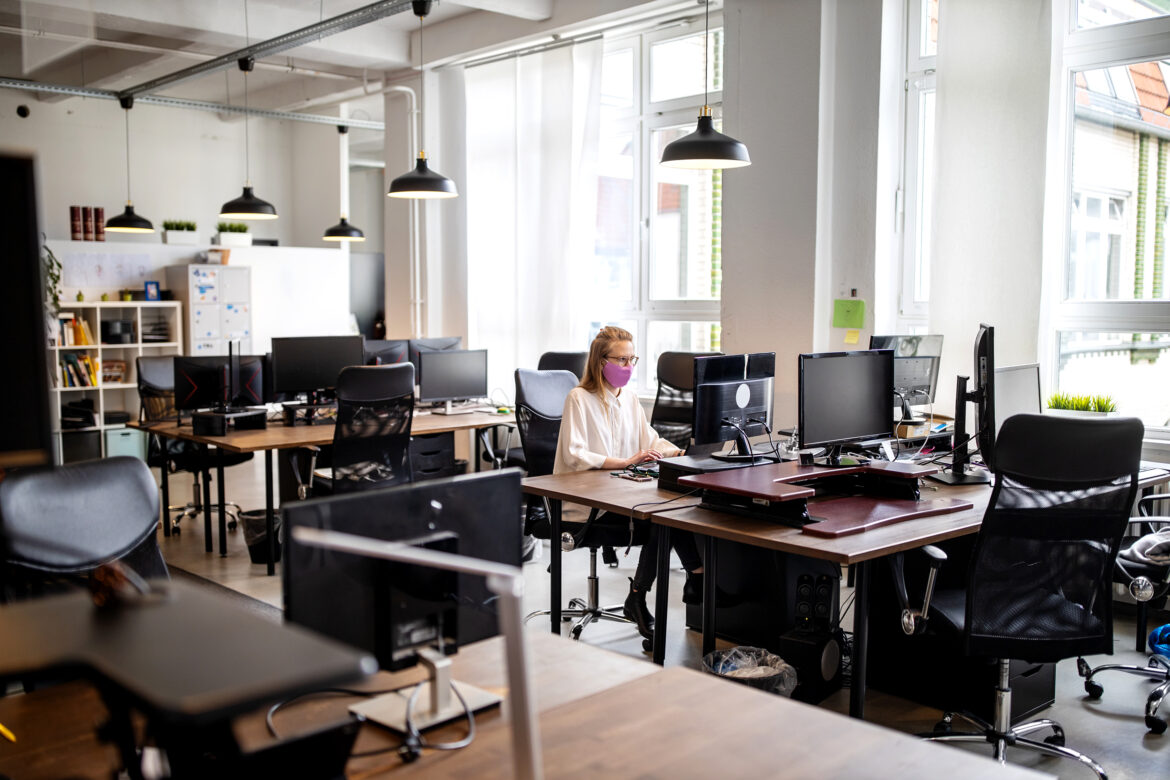Pandemic business etiquette: what will change, not and the new

INTRODUCTION
All over the planet, in factories, stores, service fairs, schools, etc. human resources professionals, are putting in place policies and procedures to allow team members and business communities to work in healthy environments with safe conditions despite the COVID-19 pandemic. Beyond these new sanitary measures, workplace etiquette is evolving. Historically, etiquette codes have evolved with the acceptance of certain customs within a certain group or culture. Working with the possibility of contracting COVID-19 involves rules that are under review and continuous adaptations, until a vaccine is effective and accessible. Until then, here’s how to adapt as a professional while continuing to project confidence and credibility, internally as well as externally.
I– WHAT DOES NOT CHANGE: YOUR COMMUNICATIONS
Pandemic or not, to communicate well, you must always communicate with empathy. Empathetic communication is based on the reality of those who receive your messages.
For your communications to be successful, your interlocutors must capture your intention. Since the success of your business depends on your communications with your customers and suppliers, this general recommendation also applies when you interact with them as well as with your superiors.
Having concern for the other, a person who undertakes an empathetic communication inquires about his interlocutor and takes into consideration his possible reactions and situations. Do this by regularly by validating the information you send out and receive. Remember the start of the lockdown. You and your team members instinctively adapted your emails by starting them with something like: “I hope you and yours are doing well, as together we make pandemic history”. You also ended with empathy by adopting a “Take care .”
Now that the recovery is underway, it is important to continue to inform your interlocutor and especially to validate with him or her if the deadlines for providing the deliverables are reasonable or if the actions that they are asking you to take are possible: “Please advise me if this project is feasible under the current conditions and timeframe required. Please send alternatives if necessary or schedule a call to discuss it.”
When working remotely, there is even more interdependence than before. New protocols are added to preserve everyone’s health. Patience and flexibility are more than ever required to promote communications that are empathetic. Know that the members of your team all live different circumstances: they may be in telework mode, more or less well installed, with children at home or with parents possibly in need, not to mention that all probably have an increased anxiety as well as a weakened state of health. You must be open to new ways of working, such as a new work schedule or a combination of telework and office days. If in doubt as to what would work best, find out.
In this period of mostly virtual communications, studies tell us that visual or digital fatigue is real. Combined with major changes in the way we operate and new instructions, it is therefore important to choose the best mode of communication, according to each message. As I explained in a previous article, a videoconference meeting is not always the solution, nor is a text message.
Post-pandemic: An increasingly civil, respectful and inclusive workplace.
II– WHAT CHANGES: BUSINESS MEALS
Having long been recognized as the preferred activity for building relationships with colleagues or clients, “having a bite to eat together” will need to be adapted to reflect sanitary hygiene measures.
Muffins and coffees for morning meetings are traditionally served on a self-serve basis. We will no longer see the full trays where we served ourselves with tongs, took a napkin from a stack or poured a coffee from the huge thermos. This communal service will be replaced by individually wrapped portions to avoid contaminations.
For celebratory meals, you must say, “Bye-bye buffets! Hello individual box.” These will be served by a gloved and masked person.
Some companies will no longer allow lunches to be left in the fridges. Others will require identification of names on lunches. These are certainly considerations which apply to your functions and which deserve some thought as well as discussions with future users and your superiors, before all go back to work.
If, before the pandemic, your employer offered coffee all day long, consider offering to use this budget to distribute gift cards to coffee shops and restaurants that can be found around your facilities. In this way, you will kill two birds with one stone, you will avoid contamination situations while encouraging local businesses near your offices.
Cafeterias are also preparing pre-packed individual portions and displaying “If you touch, you buy” signs.
Extended lunches in private corners of restaurants will be replaced, for the time being (fortunately, the weather is fine!), by meetings on patios which risk having a slightly noisier environment. Plan to meet only for coffee or, why not, suggest a picnic-style meeting, where all bring their own lunch.
Obviously, all these moments of conviviality for eating will be two metres apart between the guests that will disinfect their hands before and after eating.
Post-pandemic: once the risks of contamination have disappeared or a vaccine has been found, plan for a comeback in business lunches to recognize the merits of certain people, celebrate successes or commemorate more intimate events. in the eyes.
III– WHAT’S NEW: WELCOME
Previously, a visitor would announce himself and the person at the front desk would stand up, offer to put his coat in the locker room, serve him a coffee.
Now, the front desk clerk stays in his chair and writes down the visitor’s name and phone number, so they can be reached if there is ever a case of COVID-19 contamination in the office.
Each visitor keeps their personal effects in their “bubble” and nothing is handed over to outsiders nor accepted.
This same visitor will also be invited to mask and disinfect their hands by being directed to a basket or tray containing disinfecting wipes, antibacterial hand gel and masks, in case they have forgotten theirs.
There are no more candy wrappers, beverages served on site, nor magazines to leaf through.
In order to welcome and not offend any visitors, inform them in advance, with an email and perhaps even by text, of the hygiene measures in force in your organization. Advise them that they will need to bring their water bottles and, if you anticipate delays, that they will also need to bring a book or tablet to pass the time, especially if you run an office such as a doctor’s office.
Start these communications with an appreciation, “Thank you for your loyalty. We look forward to seeing you again. To ensure your well-being and that of our employees, here are the preventive measures to be taken during your visit”.
And then, for you and for all those who will welcome your visitors, for now, do as we indicated in a previous article, “on pandemic business greetings: place your right hand on your heart like Celine and bow your head, wave like Her Majesty or do the namaste.
Post-pandemic: Precautions will be taken to account for seasonal viruses by permanently installing antibacterial gels, wipes and handwashing protocol posters.
CONCLUSION
If, since the lockdown, you have noticed that many of your employees do not know the instructions for an effective email, the rules for participating in activities that take place in videoconference, the principles of a positive first impression or the rules of dining etiquette, take advantage of the slowdown to plan and coordinate a training activity with me. Before, during and after the pandemic, your image matters.
Published in La reference de l’Ordre des conseillers en ressources humaines du Québec on September 8, 2020 (c) Julie Blais Comeau




